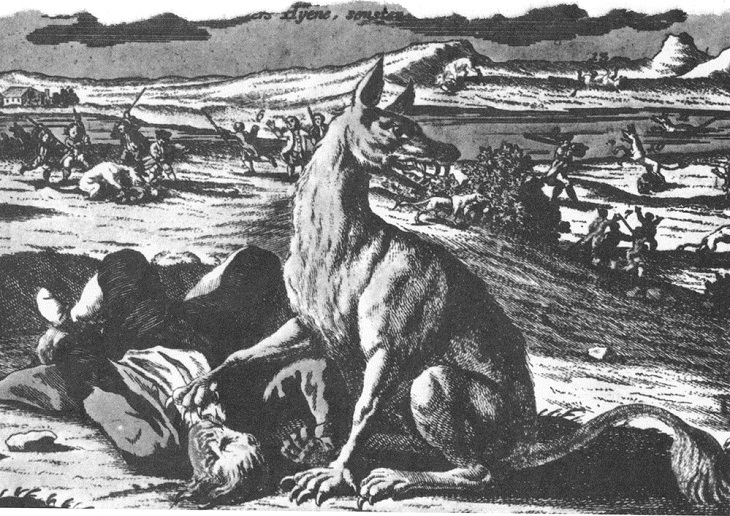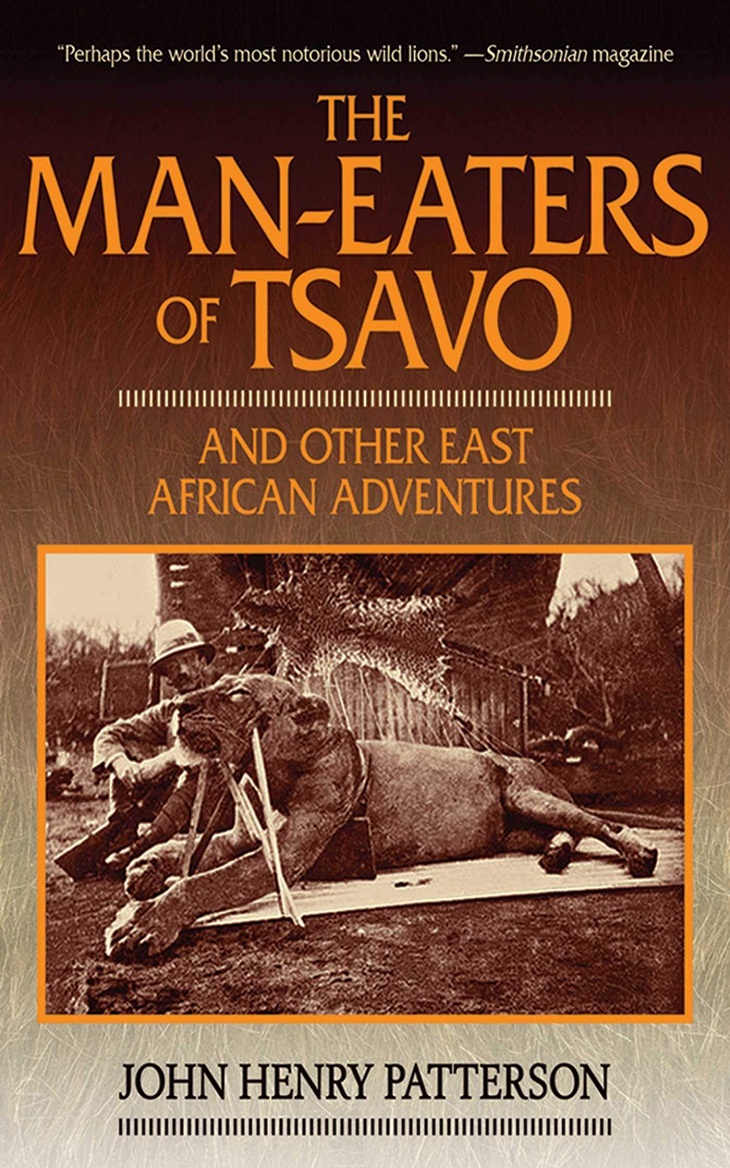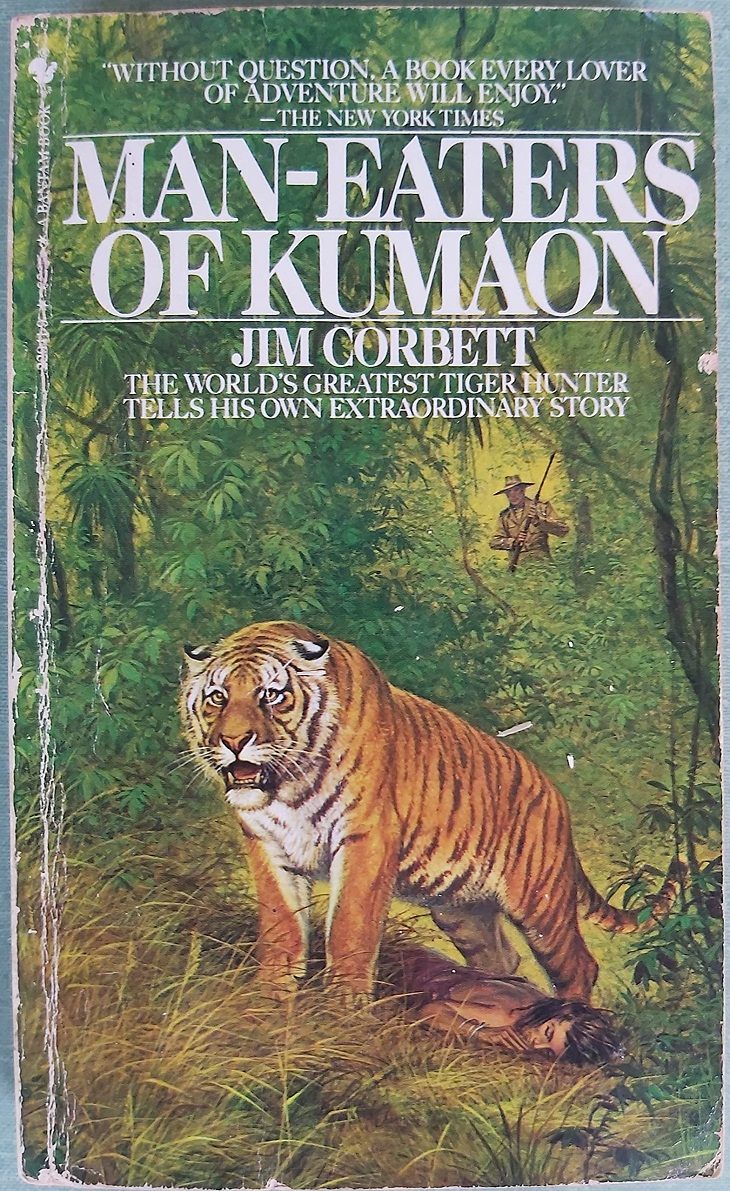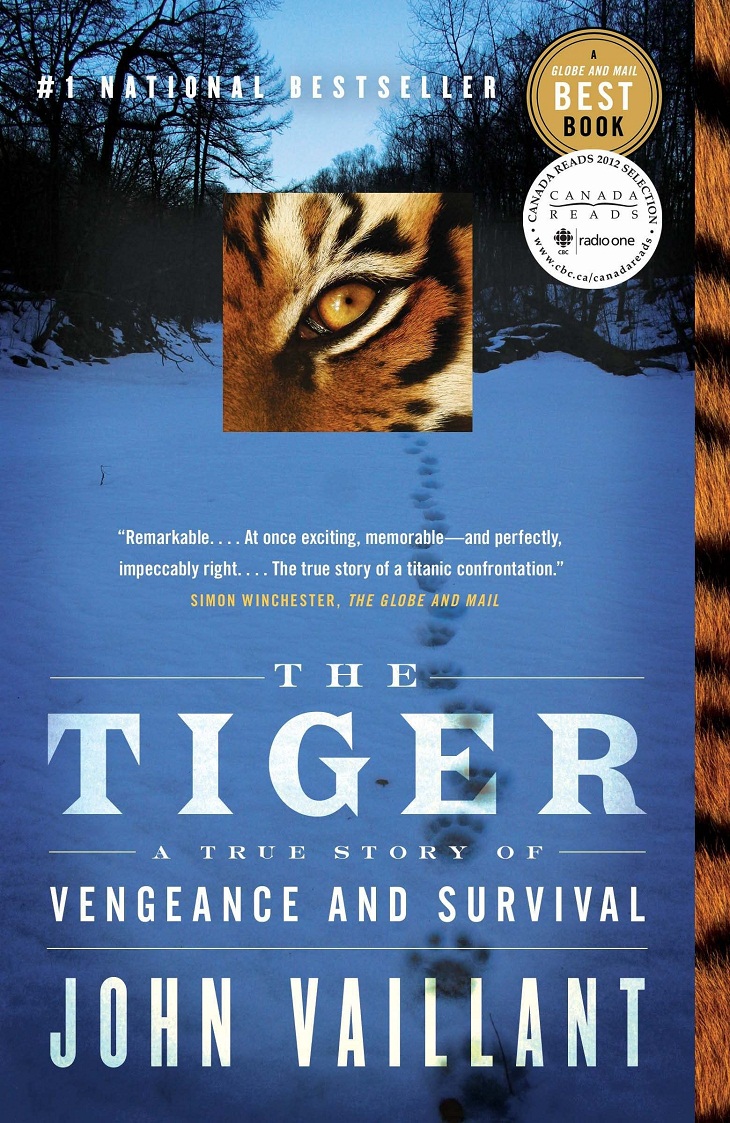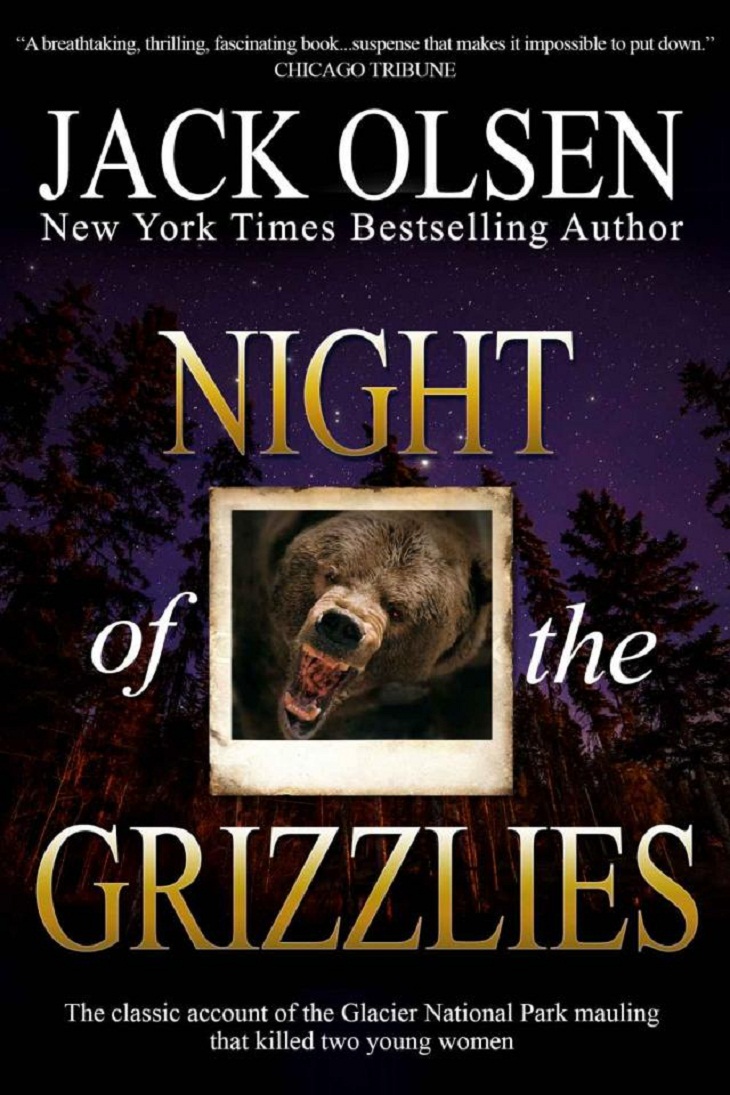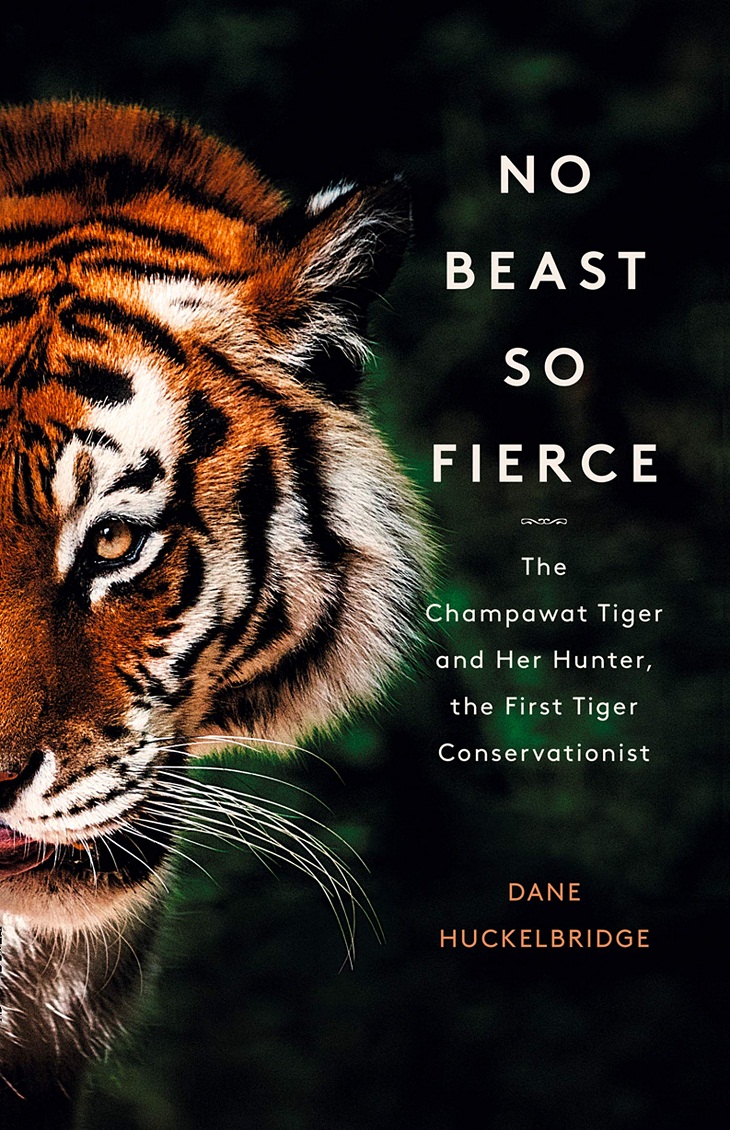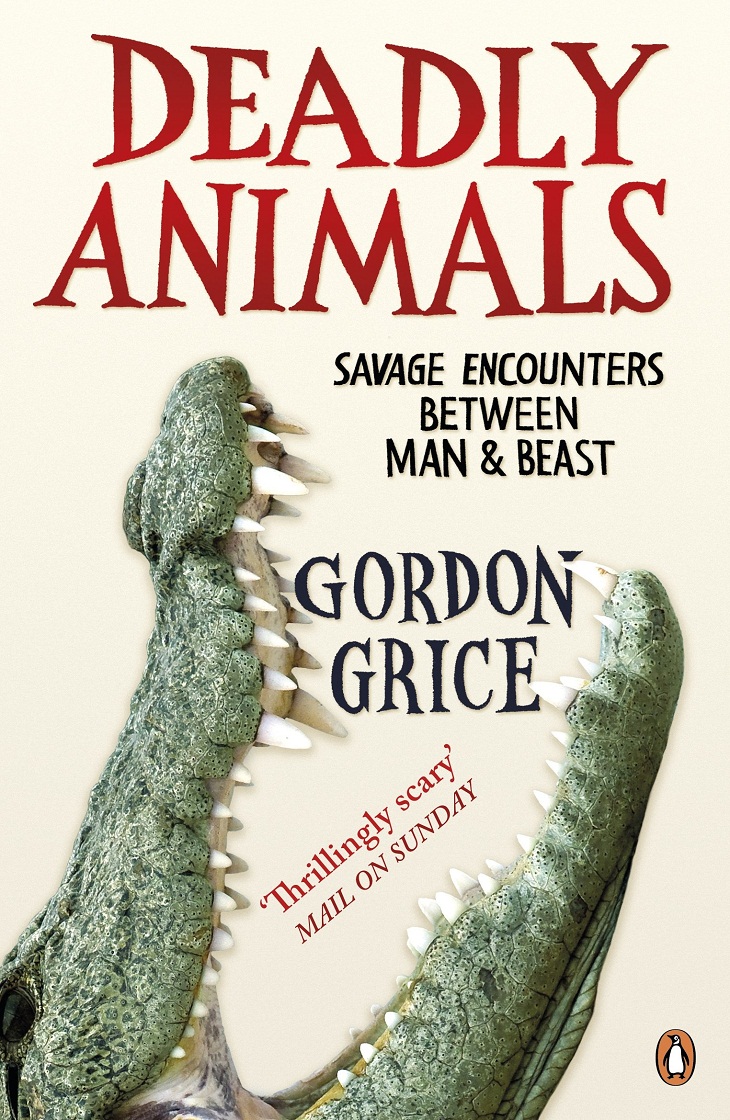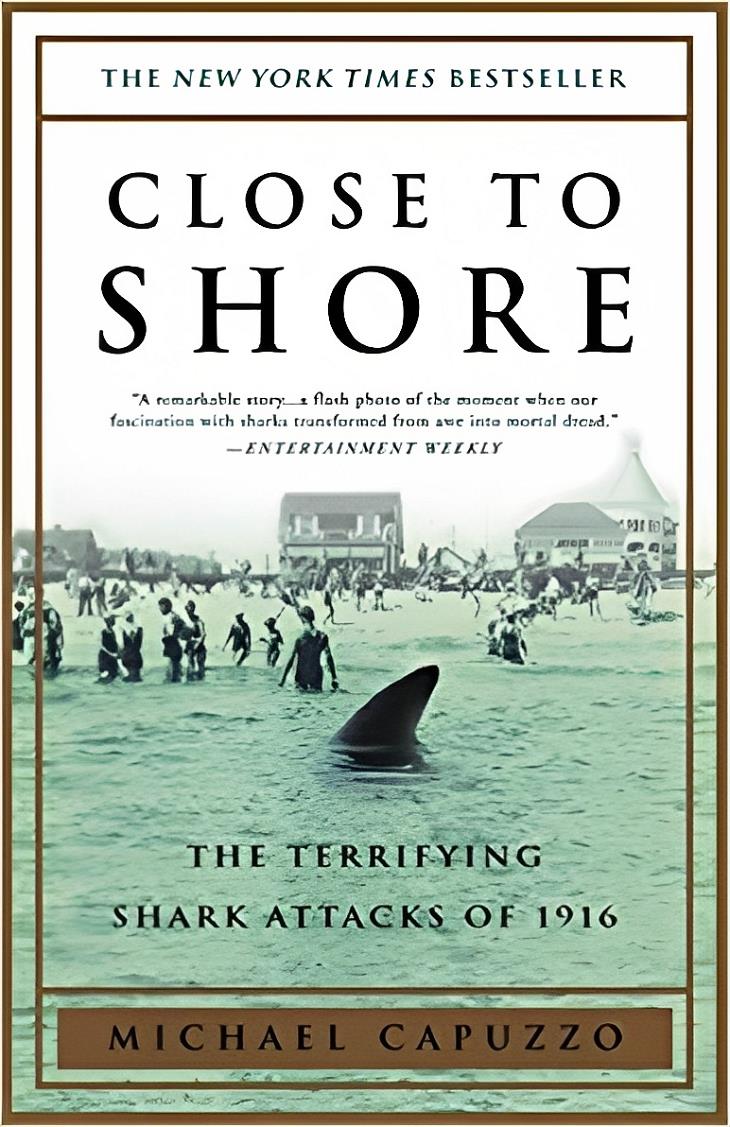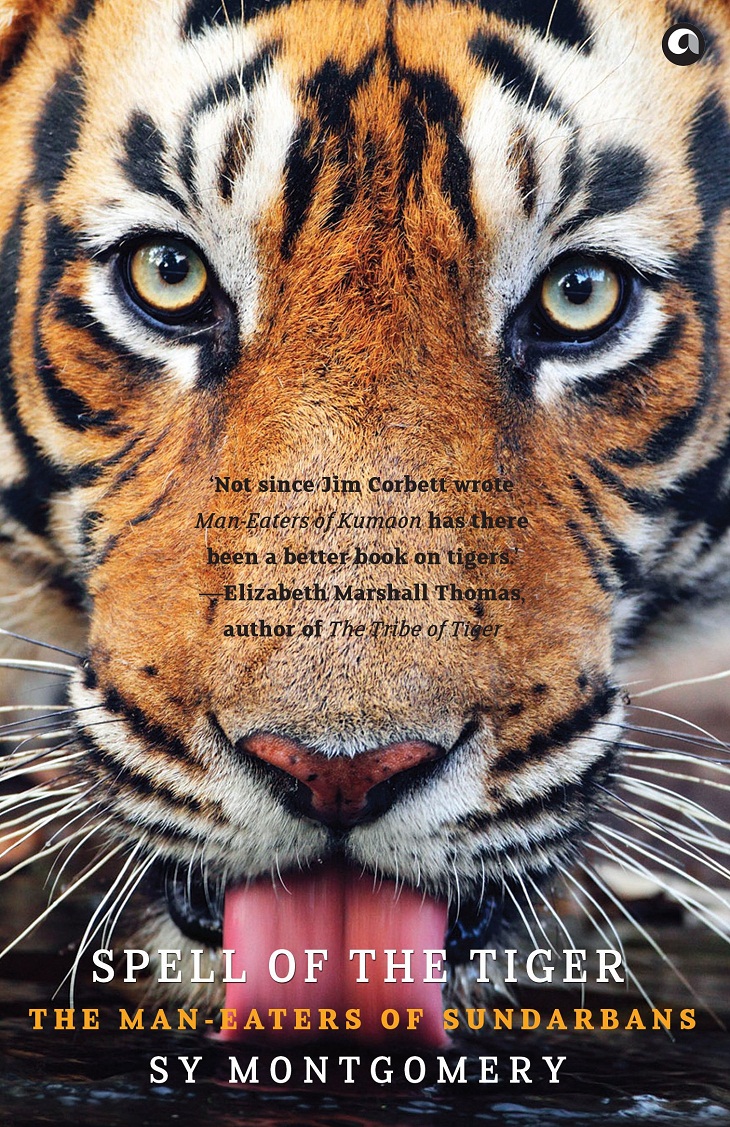The Beast of Gévaudan
But what prompts some predators to consider humans as their natural food source? Starvation, old age, and illness are some of the common factors that, scientists believe, drive some carnivores to target humans. It is often impossible for a tiger or a lion to hunt its usual prey if it has become old and weak or lost its canines in battle. Then, they target humans, as they are easier to catch. Many times, predators are forced out of their territory by rivals, and while looking for food, they come across humans. Once they develop a taste for human flesh, they can’t seem to let go.
Books About Real-Life Man-Eating Animals
As we mentioned, throughout history, there are several documented cases of animals attacking and hunting humans for food. Many interesting books have been written on this subject. Here, we look at some terrifying real-life killer animal books you should read.
1. The Man-Eaters of Tsavo by John Henry Patterson
The Man-Eaters of Tsavo is the first-hand account of one of the greatest man-eating sagas of all time. It tells the tale of two unusually large maneless male lions who, for nearly a year in the late 1890s, terrorized workers building a bridge over the Tsavo River in Africa. According to some estimates, the lions killed some 135 people before Lt. Col. J.H. Patterson, who was tasked with supervising the construction of the railroad bridge, neutralized them.
Killing the two deadly beasts was no easy task. The lions had engaged with humans for a while and knew their habits. They were skilled hunters and brave enough to enter the camps in broad daylight to drag off a victim. With courage and tenacity, Patterson took on the task and vividly recounted his encounters with these lions in the style of an adventure novel.
2. Man-Eaters of Kumaon by Jim Corbett
Jim Corbett was a British hunter, tracker, and naturalist who lived in India until the 1940s. He gained fame after tracking down and killing several man-eating tigers and leopards across the country. Corbett was also equally well-known as a storyteller whose spine-chilling hunting tales have enthralled readers for generations.
In Man-Eaters of Kumaon, Corbett details his experiences tracking and taking down man-eaters in the Indian Himalayas during the early 1900s. Even though tigers were being hunted intensively at the time, there were still a lot of them out and about, and many had turned into man-eaters. Corbett first writes about the Champawat Tiger, a Bengal tigress responsible for an estimated 436 deaths before he tracked her down in 1907. He then writes about a few other fearsome man-eaters, many of whom proved to be quite the challenge.
One of the more interesting parts of the book is how the author describes why tigers start hunting humans. Corbett does an excellent job explaining that.
We'll leave you with this chilling passage by Corbett on the Champawat man-eater:
"Two months ago a party of twenty of us men was on our way to the bazaar at Champawat, and as we were going along this length of the road at about midday, we were startled by hearing the agonized cries of a human being coming from the valley below. Huddled together on the edge of the road we cowered in fright as these cries drew nearer and nearer, and presently into view came a tiger, carrying a naked woman. The woman's hair was trailing on the ground on one side of the tiger, and her feet on the other—the tiger was holding her by the small of the back—and she was beating her chest and calling alternately on God and man to help her. Fifty yards from, and in clear view of us, the tiger passed with its burden, and when the cries had died away in the distance we continued on our way."
3. The Tiger: A True Story of Vengeance and Survival by John Vaillant
John Vaillant tells the true story of a tiger terrorizing a Siberian village. This isn’t your typical man-eater, though. This is a particularly vengeful one.
In the course of this account, Vaillant provides fascinating descriptions of the history of the Amur tiger. In addition, he allows us to spend time with local characters and the area's poachers, even the ones who became the tiger's prey. The book moves along at a decent speed and keeps you engaged with its use of forensic evidence, post-mortems, and the successful tiger killing.
It is an excellent read that will stay with you long after you close it.
4. Night of the Grizzlies by Jack Olsen
This book is about the fateful night in 1967 when two separate and unrelated campers were killed in different places by predatory grizzly bears in Glacier National Park in Montana, USA. The park, covering 1,600 square miles (2,574 km), recorded no grizzly-caused human fatalities since it was established in 1910. The Night of the Grizzlies by Jack Olsen is a skillfully written account of what happened that night and how it came about. According to Olsen's account, the two young campers' horrifying deaths were both inevitable and avoidable.
The sections detailing the interactions between humans and grizzlies are brilliantly written and are sure to give you nightmares. You will also appreciate the descriptions of the landscape, the insights into the natural history, and the details of the flora and fauna of Glacier National Park.
5. The Beast in the Garden by David Baron
Journalist David Baron examines the history of the mountain lion and describes one town's valiant attempt to cohabitate with them in this captivating environmental narrative. In 1991, in a small community outside Boulder, Colorado, a mountain lion that had become habituated to humans, killed (and partially ate) an eighteen-year-old student while he was strolling the area around his high school. Interestingly, such an attack was predicted by some in the local conservation community, while others dismissed it. The lead-up and the consequences of this attack make up the book.
In the course of recounting the tale, the author discusses the history and evolution of mountain lions, their past interactions with people, lion behavior, the issues that arise when people and mountain lions creep into one another's habitats, and how the two may coexist. Baron does a fantastic job of weaving everything together to produce a book that is both educational and quite enjoyable.
6. No Beast So Fierce by Dane Huckelbridge
In Man-Eaters of Kumaon, Jim Corbett recounts his battle with the Champawat man-eater, the tiger that allegedly killed 436 human beings in Nepal and India between 1900 and 1907. No Beast So Fierce dives deep into the story of the deadliest animal of all time and its eliminator. The author explains why the tiger decided to pursue humans and provides sufficient background information on the cultural and social significance of the tiger hunt.
As the story continues, the author tells us more about Corbett and the pattern of the notorious tiger's attacks. The research on the subject is both detailed and extensive, and the language and style are engaging. Another interesting aspect of the book is that the author doesn’t turn the tiger into a monster. Her account makes us understand how injury, degradation of habitat, and loss of prey forced the tiger to turn toward people.
A sense of sadness pervades everything, not just for those affected by the tiger's plight but also for the desperate animal herself, as it is forced to become increasingly close to humans.
7. The Book of Deadly Animals by Gordon Grice
In The Book of Deadly Animals, readers learn about many of the creatures that can be dangerous to man, some of which you might never think of. There are the obvious ones, like wolves, sharks, bears, tigers, and even hyenas. But you will be shocked and horrified by the chapters on insects and rodents. There's a section on aquatic dangers and one on the threats posed by snakes, crocodilians, lizards, and birds. It ends with various animals, such as elephants, monkeys, and apes. The book is also chock-full of harrowing first-person experiences of victims who became prey to savage beasts.
In a way, finishing The Book of Deadly Animals is like leaving a zoo full of dangerous beasts. Passing each ghastly enclosure will awaken you to the reality of the many man-eating creatures on our planet. It’s fascinating and terrifying, but deeply interesting throughout.
8. Close to Shore: The Terrifying Shark Attacks of 1916 by Michael Capuzzo
In the summer of 1916, five people were attacked along the coast of New Jersey by sharks. Only one of them survived. The sudden attacks sparked widespread panic and led to the largest-ever shark hunt in history. If the story sounds familiar, it's because the events in this book are the ones that inspired the classic Steven Spielberg movie, Jaws.
These attacks are the subject of Michael Capuzzo’s Close to Shore. The chapters explore the events through the people involved and depict the nature of the great white shark. Along with the hysteria and, in some cases, the absurdity that characterized reactions to the attacks, there were also several instances of extraordinary bravery.
The language here is so vivid that every bit of information has an even more powerful impact. In addition to the story itself, the history is equally compelling. Capuzzo effectively illustrates the society of the time to set up this story. It’s a short but captivating read that we highly recommend... but only if you are not planning to go to the beach in the immediate future.
9. Avni: Inside the Hunt for India's Deadliest Man-Eater by Nawab Shafath Khan
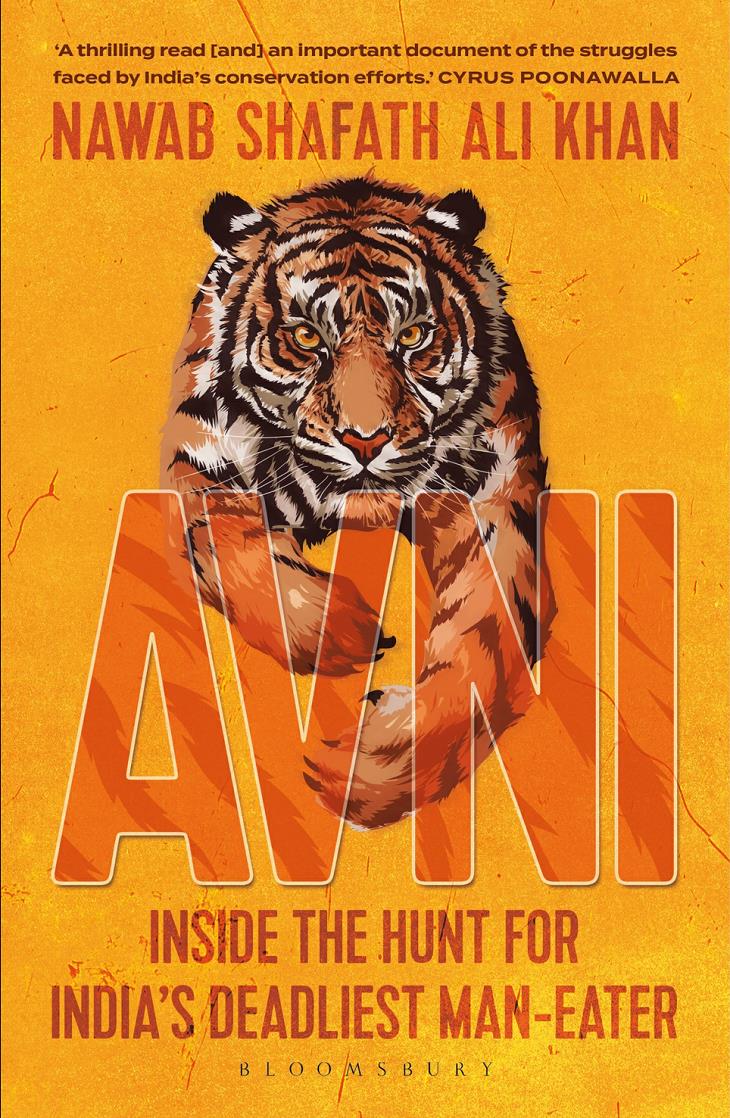
While Jim Corbett’s tales are from more than a century ago, man-eating tigers, lions, and leopards still roam many parts of India. In 2018, a man-eating tigress nicknamed ‘Avni’ wreaked havoc in the rural areas of Maharashtra, India, killing 13 people. Such was her fear, they say, that the villagers shut themselves inside their homes at night. Several attempts were made to capture her by government officials, but they failed. Eventually, professional shooters were called upon to neutralize the rampaging tigress. Nawab Shafath Ali Khan, the man who led the operation to eliminate Avni, writes about his exploits in this captivating book.
This isn't an easy read. The subject is horrendously macabre, and the gory details of the killings by the man-eating tigress do get to you after a while. That said, this is also a fascinating book. It gives an interesting account of the events surrounding an incident that nearly brought down an entire state. The author also does well in setting up the terror and chaos that the rogue tigress caused among the locals. His chilling encounters with the man-eater at night are sure to make one’s skin crawl. It’s difficult to imagine what it would feel like to come face to face with such a bloodthirsty beast.
Khan has immense knowledge of the forest and its ways. The narrations of his past encounters with man-eating animals almost read like a Jim Corbett story at times.
Avni is an important book as it alerts us to critical issues regarding conservation and man-animal conflicts in India. To appreciate it, you don't have to be an animal lover. It is really interesting and eye-opening.
10. Monster of God: The Man-Eating Predator in the Jungles of History and the Mind by David Quammen
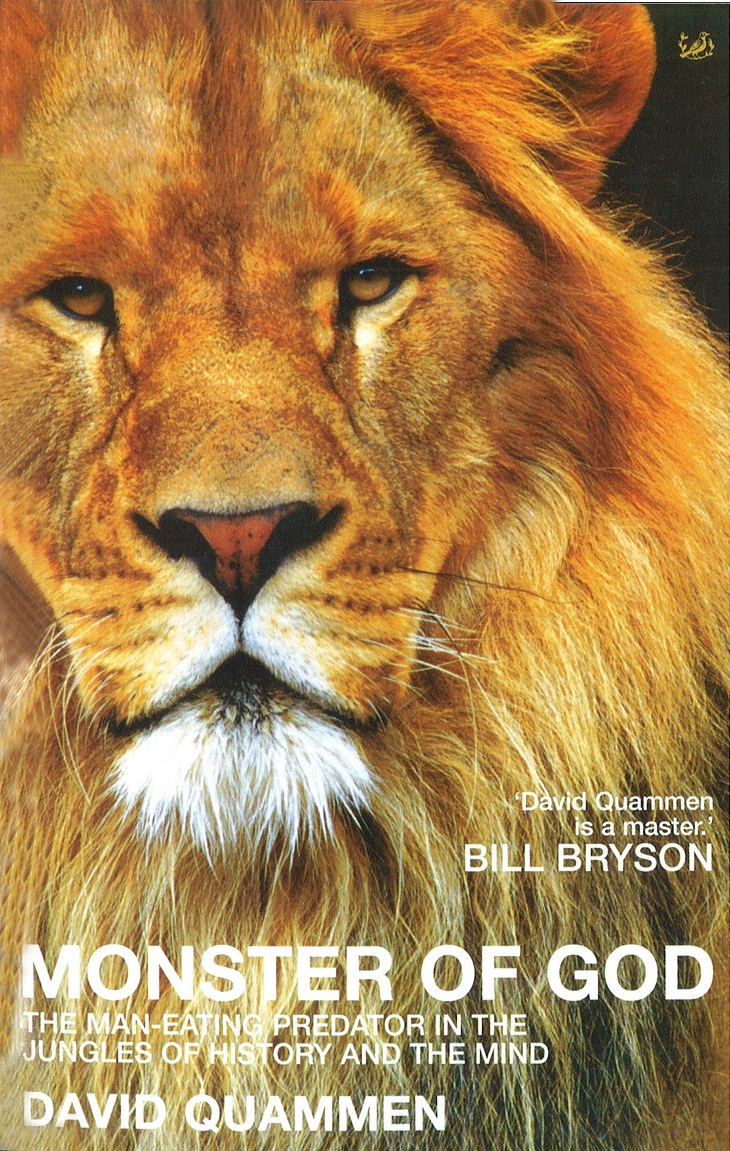
David Quammen is a well-known science writer. In his book Monster of God, he delves into the importance of the alpha predators of the world, from their evolution and natural history to their place in the world's ecosystems. He investigates the plight of Asian lions in India, saltwater crocodiles in Australia, brown bears in the Romanian Highlands, and Amur tigers in the far east of Russia. Each of these pieces is a distinct story, where Quammen talks about the mighty predators of those areas and the people who live among them.
It also discusses how these predators have been incorporated into humanity's folklore and mythology, from ancient myths and legends to their representation in the modern world. Overall, this is a very well-researched book that offers a deep insight into some of the problems between mankind and the other top predators on the planet.
11. The Mammoth Book of Man-Eaters by Alex MacCormick
As you might have guessed from the title, this is an anthology that covers attacks on humans by different types of animals from around the world. The author draws from a range of sources, including newspapers and memoirs, to portray countless horrifying occurrences involving man-eaters. From killer bees to rogue elephants, fire ants, and sharks to snakes, crocodiles, and grizzlies to dingos and rhinos, the book explores a variety of man-eaters who have taken a toll on unwary humans.
12. Spell of the Tiger: The Man-Eaters of Sundarbans by Sy Montgomery
A multiple international award-winning author and celebrated wildlife writer, Sy Montgomery takes readers to the Sundarbans, the world's largest mangrove forest and one of the largest wilderness areas in India and Bangladesh, in Spell of the Tiger. In this region, tigers frequently kill and eat humans - mostly fishermen and woodcutters - by silently swimming behind them and dragging them away. Despite this, the tiger is considered a god by the people here.
The aggressive nature of these amphibious tigers, who have developed bizarre dietary habits, is not well understood. In this book, Montgomery describes the marvels of the Sundarbans and their enigmatic tigers. She writes that the locals here really believe that these tigers appear out of nowhere to jump onto their boats and take them away. Even if you think you know everything there is to know about tigers, some of the experiences described in the book are so spine-tingling that they will make you shudder. The book is as much a depiction of the Sundarbans and its tigers as it is of the people who live with them.
Share this post with friends and family!

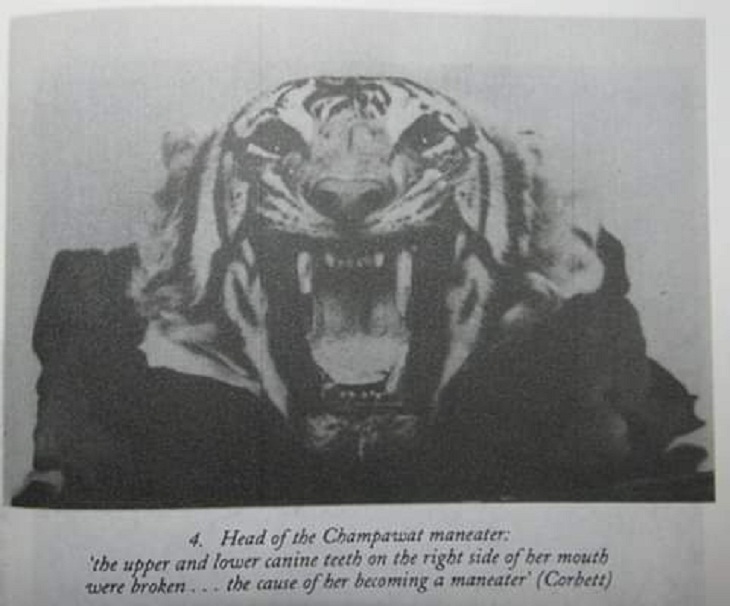 Image source: Wikimedia Commons
Image source: Wikimedia Commons